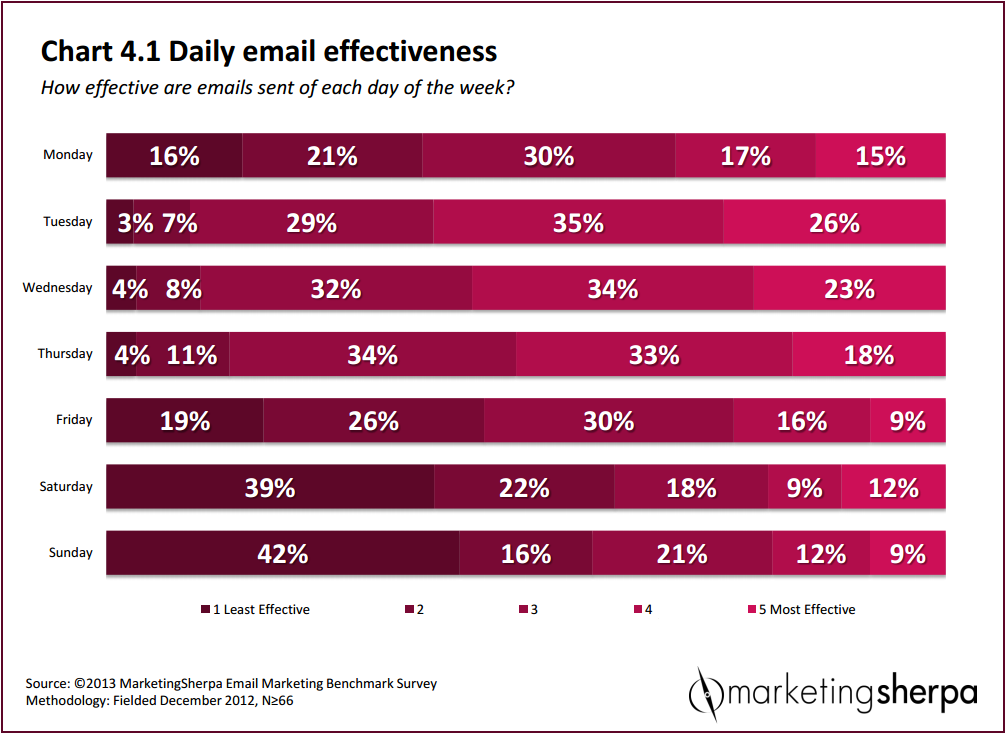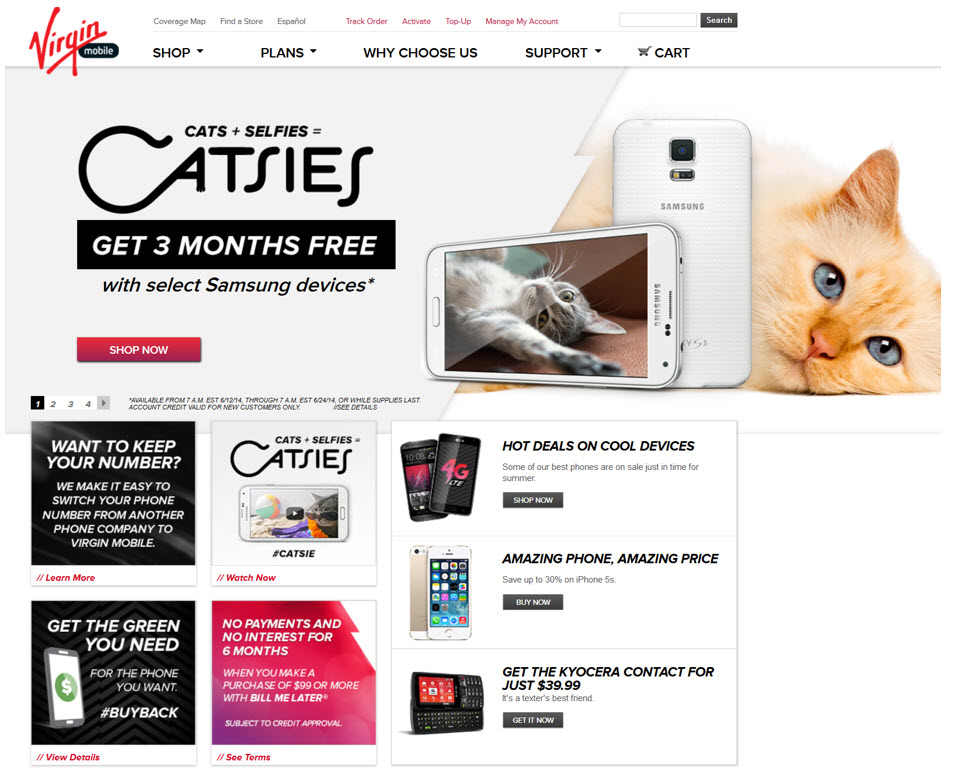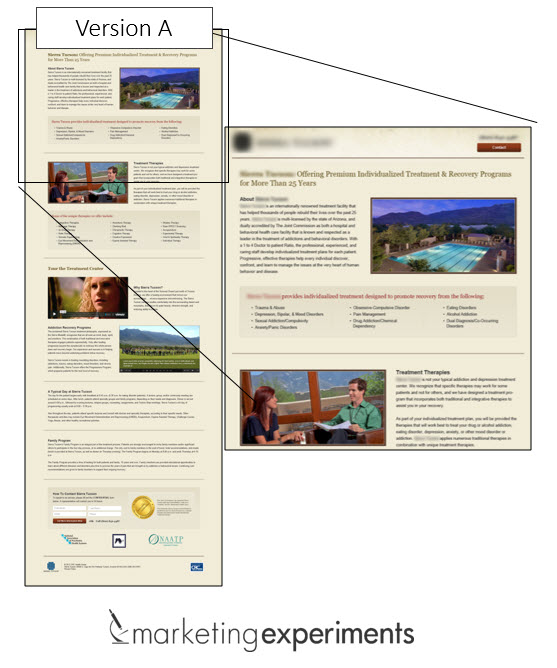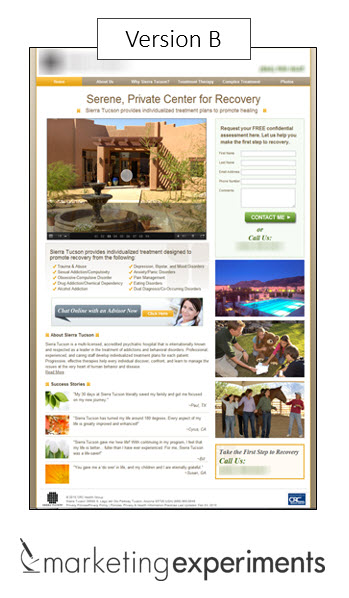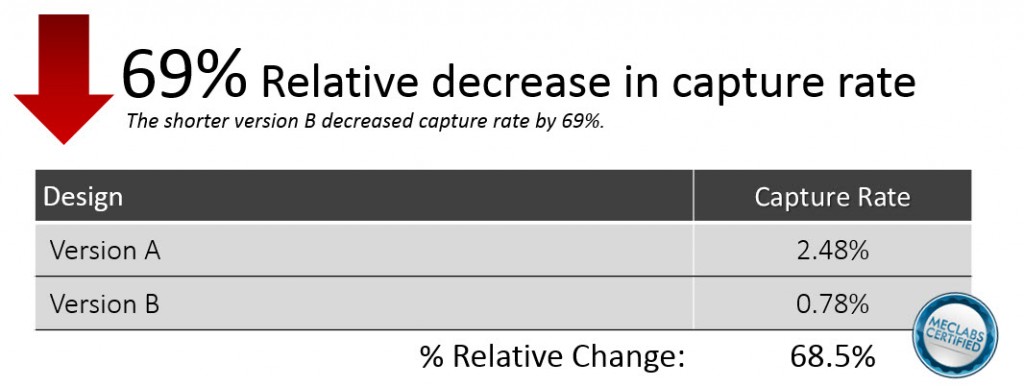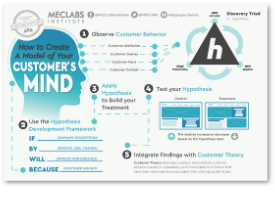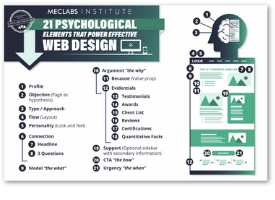“I think at its core, lead generation is really about relationships,” said Brian Carroll, Executive Director of Revenue Optimization, MECLABS.
Steve Gershik: My guest today is Brian Carroll. Brian is an old friend of mine, CEO of In Touch, which is a MECLABS company and an author of the industry defining book, Lead Generation for the Complex Sale, which I think you started writing probably 10 years ago, is that right Brian?
Brian Carroll: Yeah, we are coming up on 10 years.
Steve: That’s crazy! So much time has passed!
I want to ask you about the book. It was certainly a book that changed the way that I think about demand generation in so many ways and you were, really as I started a blog on demand generation, I look to your writing as an example for the right thing to do and you are still bogging and podcasting today a decade later.
Brian: It’s hard to believe. Steve I always enjoyed your work as well and I am really glad to be with you.
Steve: So 10 years ago, you published Lead Generation for the Complex Sale. When you wrote it 10 years ago it was published short time after that. What’s changed since then?
Brian: I think a number of things have changed. What I think is the way people are buying has really amassed. If you look at statistics like 60% of adults have smart phones for example, which is changed. I remember 10 years ago, people just had BlackBerries and now everybody has something it seems. And so our personal life, or business life, have become enmeshed. And what I have observed is B2B buyers are buying a lot like consumers because our lives are enmeshed.
So that’s changed as well as social media like LinkedIn, Facebook, Twitter; [back then] those things really hadn’t taken off to the degree they [now] have so that’s changed a lot as well, just in terms of always on, connected. There are still a number of things that stayed the same but those are the biggest change is that I have seen.
Steve: Now as you reflect back on the book, what are the types of things that you think the ideas in there that are enduring? So somebody can go back and read Lead Generation for the Complex Sale and it is still as applicable today as it was back then?
Brian: I think at its core, lead generation is really about relationships and to the key idea is around being able to identify the right people and the right companies and having a way of initiating memorable conversations and then being able to nurture that dialogue that you started regardless if they are starting to buy with these people — instead of leads, thinking of them like future customers.
So I think most of the fundamental ideas, when I go and right now I’m going to be doing revised edition of my book; 75% of it probably is going to remain unchanged mainly because these were bedrock principles and I am relying on 185 sources that I share in my book, not just my own resources but from many people.
What we found is, knowing who your customers are, getting alignment between sales, marketing and what a lead means. Then being able to articulate your value proposition; not just understand your sales process but to really understand your customers buying process. Ideas like that are enduring and there are very few things that I invented.
What was different about my book is that I took a holistic view; brought many other people’s ideas together in a way to codify that idea to try to take the mystery out of this thing called the complex sale and how we generate leads for it.
Steve: So I’ll put you on the spot and ask you to grade the industry overall.
So you put together the instruction manual for really how to do buyer centric, human-based, B2B marketing and let’s say the industries had plenty of time to receive your message and absorb it; how are people doing? How is B2B market doing in your assessment?
Brian: Well, when I wrote my book I would say industry in my opinion was at a D. I think that we are now approaching C+ level and that is definitely progress.
A year ago MarketingSherpa, our sister company, did research and found still over 72% of the marketers we surveyed send leads directly to sales without qualifying them. So that was one of the things we looked at and one of the biggest reasons why 80% of leads are being lost or being, ignored or discarded when Marketing hands them to Sales or they call themselves so-called qualified marketing leads.
They really don’t match the sales team’s expectations. So I would say from an industry perspective, we have quite a long ways to go. I do want to give a lot of credit to the market automation companies who have been part of influencing the industry.
I know that you’ve worked with Eloqua at the time and a lot of things have happened with many of the companies and consolidation is taking place but what we realized is tools aren’t going to drive transformation — they support it. They support collaboration, but we still need to have some fundamental ideas about why we are doing what we are doing and then have people understand the “why” and then we can decide the “what” and the “how.”
So those are three things I still think are gaps and we’ll continue to beat our drum to effect that change.
Steve: I was excited to hear that you were working on a brand-new book in addition to updating your classic book.
Brian: Yeah.
Steve: Talk about what this new book is about and what made you decide to write it now.
Brian: Well, I don’t even have a working title for the book but what it’s really coming down to this idea empathetic marketing or servant marketing.
This is something that has been near and dear to me which is the main gap I see is that often times us as marketers, sellers or companies; think in a sociopathic behavior in terms of, “How do I get what I want?” And what was driving me is that I have been seeing that if we look at serving our customers and instead of that, given this is something we talk about, but really isn’t practiced.
We aren’t necessarily practicing what we preach, which is putting our customers first.
What I see happening is that we operate out of a place of company-logic instead of customer-logic and so what I have been seeing is that at its core, marketing has a huge opportunity and responsibility to drive transformation inside their companies. And what I am looking to do is have the marketers inside of the organizations, they can have a longer-term view than Sales that is typically focused on the short-term one or two quarters.
They are looking at, “How do we generate revenue now and meet the immediate needs?” But I think Marketing has a huge opportunity to be thinking about the future and how do we serve our customers better? Whether there are needs and wants. And instead of me trying to look at it’s just from my point of view, I need to understand how the customer thinks through the process.
So what I am doing is just writing in terms of bringing this culture of marketing, this idea of transforming marketing inside companies and so it’s going to be less of a tactical book but it’s more about idea and transformative book to help those who want to lead and drive this change and in effect, restore honor to marketing which I think in a lot of ways.
I would like to ask you a question that someone asked you what you did, I don’t know what you would say but sometimes I would say, “Well, I am in marketing.” And people aren’t excited by that. They think I am manipulating people or they may judge that I am in advertising or all those things that’s about not having relevance, not connecting with needs and in the effect trying to pitch people or make people do something they wouldn’t otherwise do, either [through] trickery are other things.
You and I both know Steve that’s not what we’re looking to do but that in effect sometimes our companies, in the interest to drive profits and drive revenue, are forcing us where we are looking at what can we get now in the short-term and then abusing tired and weak strategies that no longer work, which our customers ultimately ignore and we miss that opportunity to really connect and add value.
So if I were to sum it all up, it would be two things — instead of trying to be interesting, be interested in your customer and that really starts by listening.
Steve: You said that a lot of marketing is sociopathic. Now, that’s got a really negative connotation. Talk about how you know if your marketing is sociopathic?
Brian: Well I think it is the definition of sociopathic really is being focused on getting what you want at the expense of someone else. There isn’t a fair value exchange taking place. And so what I have learned in terms of working at MECLABS and we spent a lot of time here studying and trying to ask answer one question which is, “Why do customers ultimately say ‘yes’?”
And what I found is, if you think of the popular movie that came out, “Wolf on Wall Street,” that exemplifies sociopathic behavior.
Steve: Yeah, that’s a great example!
Brian: At the highest!
So that is taken to the extreme, but it is that type of behavior why I think many businesses are struggling. So I think we need to embrace empathy on every level because customers are more sophisticated and they have access to more information. They really are looking at understanding what it is, how do they get what they want, we need to know what that is and give it to them and that requires us thinking like our customer, putting ourselves in their place. Instead of just trying to optimize our marketing, we need to understand is how our customers are really thinking and feeling.
Steve: Now that sounds great! But there are wolves in our own companies and many places. Sometimes those wolves are dressed as salespeople, sometimes they are dressed as finance people, and sometimes they are dressed as our marketing colleagues.
How do you resist the pressure to perform these shortcuts to get people stuffed into your sales funnel as opposed to doing what you are talking about? I guess the question is about to the organization; how do you get consensus in your organization that you are going to change the way that you interact with your customers?
Brian: Well I think that the biggest piece, and this is part of the reason why I am writing my book and I wanted to share a quick story with you. I am actually looking to find other stories and proof points and this is something where.
What we are working on ultimately and what I am working on is collecting the evidence to show companies and marketers that putting their customers first actually has some financial benefits. I want to give you a quick example; this is a company that is a collections agency and I am working actually on lining up an interview with their CEO. And you wouldn’t think of a collections agency practicing empathy…
Steve: Not at all!
Brian: … or putting their customers first.
Steve: Sure!
Brian: Two things that struck me about this company; number one, they received endorsements from Mother Teresa.
Secondly, the president of the company was nominated for a Nobel Peace Prize. So I wanted to figure out who this company was and why these things are happening and here is what it was — they just started with understanding at the core, their customer didn’t pay their bills and they went to collections for a reason.
It wasn’t necessarily because they had bad debt and when I first started my company, I couldn’t get a line of credit because I had made bad decisions in college and I got a called by collection agents and so I could relate to what was going on and I didn’t have the means at that time to pay.
So I got hounded and anyway, what they said is, “Why is it that people don’t pay?” They started studying the research and they started, instead of hiring collections people, they hired people who actually have customer service background. And instead of calling customers to do things like collect a bill, what they did is they actually incentivized their customer service reps to call customers to find out what it is and the incentivized them based on how many free services they gave away.
Some may not pay their bill because they need a job or the name needed childcare or they had a spouse or a parent that had long-term health issues; all these things.
And here is the bottom line, they gave away free services and customers didn’t trust them. They are like, “Why do you want to help me?” And so this is where we need to answer these questions inside our companies.
They could say this, and this is the truth — when we help you do better financially, we make more money. And what’s interesting about this company is that their average collections 200% above the industry average per customer. And so my point is, they didn’t start with, “How do we get more collections?” They started with, “How do we serve our customer?” And understanding why it is they don’t pay their bills and then actually help solve that.
They are not in the collections business, they are actually in the business of helping transform people’s financial lives. It’s a very different thing.
Steve: That’s a fascinating story.
Of course you hear these stories about obviously Zappos, was hugely popular company, how they created a culture that was focused around their customers and you hear stories about their retail chain, Nordstrom and how they go above and beyond for their customers.
How do you as a marketer inside your company, say you are in a marketing organization, how do you start to change the mindset of your company to start thinking the way that you are talking about? You are not the CEO and you haven’t been recognized by Mother Teresa yet like so many of us, but you know that this is the right thing to do.
How do you actually get started?
Brian: Well the first place I would say is, number one put the customer first and then I would say if you are a marketer, get close to your customers.
So if you have a complex sale and you have salespeople, get close to your sales team and go out with them and actually spend time talking to your customers. And so listen and seek to understand is what Stephen Covey taught us in Seven Habits of Highly Effective People.
So now do we know why our customers are saying yes? Why are they buying from us? What steps are they taking and read in the backside, what difference have we made? What are the gaps and problems they have?
Because what I find is, is that we as marketing need to be empathetic and intuitive to listen and understand. The only way we can do that is to get to the people who are talking to their customers or talk to our customers directly. I would say come at it not from a marketing point of view but really just being people with people, have a real conversation. So don’t look at how I am going to take this knowledge and put it on another campaign. I really think that we need to think of marketing as a conversation instead of pushing my agenda.
What I want to know is demonstrate first of all a good conversation starts with two people who are interested in hearing what one another has to say and so this is where I would say in some companies it means you need to be interested in the world of your salespersons because they are your customers B2B marketer. And then you also have your outside customer whom they are looking to reach.
You need to influence both. So that is how I would say and there is certainly a lot more that I could add but that’s the place I would start.
Steve: Now a lot of folks are new to marketing, young marketers in their career or marketers looking to advance inside of the career of marketing. What are some of those essential skills that you would recommend that these marketers acquire in order to continue to advance in their careers?
Brian: I think the marketers that are going to grow today and I look around and I see there is a gap right now in leadership and the biggest skill I think marketers need to develop is empathy. That is something that can be learned. Some people are naturally more gifted, but that’s really being really understanding and building influence with people starts with connecting with them.
So I would say that empathy is an essential skill.
The other thing that I would say is from an internal perspective get influence with how your company works and so I would say that marketers really need to have a connection that it’s not about moving a KPI like how many emails you are sending or getting opened or how many new subscribers get your newsletter or how many more completions you get on the form, but get influence.
Influence, in terms of understanding what’s the impact of marketing, so for example, rather than looking at how do we get more leads, I would start answering questions like, what percentage of pipeline is the leadership team looking for marketing to contribute?
So getting influence in the language of your business and the language of your customer [are] two essential skills I think marketers need to have
I think the third thing is just being more, in their view, more open in terms of collaborating and that’s working with people who are in proximity to your customer. And so really getting close to those who understand your customer whether that’s the sales team, inside sales team, sales engineers, customer service people, building relationships with other groups.
I think those marketers are going to be leaders in companies, they are leaders who can bring down the silos; last side of the information technology. I have seen reports, I don’t know that I necessarily agree.
That’s just the CMOS spend more in technology than the CTO. At least more companies and exposed to I don’t think that’s the case. Only time will tell but I would say that realize that you need to be the glue that’s bringing all the other parts together with that focus on the customer.
Steve: As part of MECLABS, you get a front row seat at really some of the interesting trends that are developing.
Brian: Yeah.
Steve: Research that is coming out. What are some of the interesting things that you are seeing these days?
Brian: Well, there are a lot of things.
The first thing I would say is we have seen that across the board, marketing channels in general are having lower and lower response rates.
We did a study of B2B buyers and what we found is that when we looked at those who influenced the buying decision versus those who are the decision-makers, the influencers felt in the area of 70% of the time, they were the ones who discovered the vendor they ultimately bought from.
And the other side, decision-makers felt 80% of the time they were the ones who discovered the vendor. So to me I found that really interesting when you consider all the billions of dollars spent on marketing, that the customers are the ones feeling they are the ones who found the company they ultimately bought from which I thought was pretty fascinating.
Steve: Well it’s interesting and it helps inform our marketing right? So if we can help them feel like they discovered our companies, then we would have achieved something significant!
Brian: Yes, yeah and Steve, that’s the biggest thing that I have also seen, it’s just there is more and more companies beginning to embrace and that would be the second thing I have seen, testing and optimization is moving from a theory and a concept a few companies employ and in fact bringing science to marketing.
That we’ve seen a huge shift in more marketers embracing, seeing optimization in titles, I am seeing testing being done and testing platforms used.
So more and more marketers aren’t just guessing but they are actually looking to build evidence to understand what their customers are doing and why they are doing it and also figuring out how to be better at marketing and connecting with their customer, too.
Steve: Brian, thanks for joining me here today.
Brian: Thank you!




